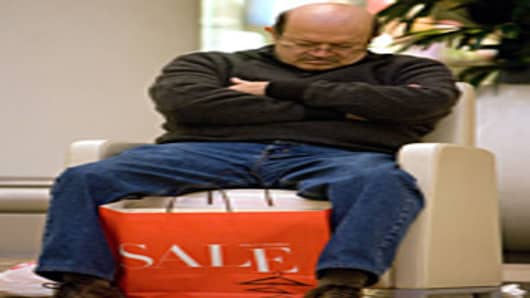Retailers have strong momentum coming out of the Black Friday weekend, but they will have to continuesome blocking and tackling to keep it going.
While most assessments show that sales and store traffic were strong over the Thanksgiving holiday weekend, plenty of questions linger about whether this is the start of a strong holiday—or merely a front-end loaded season.
One encouraging sign comes from NPD Group. The research firm suggests that shoppers are starting to buy items for themselves, in addition to gifts for others. About 35 percent of shoppers told NPD that when they went shopping on Black Friday, they also made a purchase for themselves.
If shoppers are starting to splurge on themselves, it would be an important development for retailers that could help push the holiday season past sales forecasts. Spending on oneself was virtually nonexistent in the two most recent holiday shopping seasons.
Some of that spending is no doubt coming from a combination of pent-up demand and good prices. Too-good-to-be-true deals appear to be encouraging sales of flat-panel LCD televisions, as one example, and there could be other deals out there that are too good to pass up. (Just as an example, Wal-Mart was selling an Emerson 720p 32-inch LCD TV for $198.)
That's because shoppers remain motivated by price, especially because they continue to research their purchases extensively before shopping. When asked what brought them out to the store, about 36 percent of shoppers told NPD that they "saw an item advertised on sale," and almost 20 percent said the door-busters were "too good to pass up."
So the discounts got them in the door, and once there, more customers purchased items than they did during last Black Friday weekend.
What's more the average amount spent on Saturday of Black Friday weekend was higher than on Friday. According to NPD, the average sale on Friday was $164, while on Saturday it was $190. On Sunday, store traffic was far more robust than it was last year, but the average sale ticket was lower than on the other two days of the weekend, at about $146, NPD said.
Cyber Monday sales were also strong, with many of those who shopped that day actually making a purchase. The volume online was the equivalent of adding another shopping day to the November calendar.
But what happens next?
The latest Christmas Shopping Survey from America's Research Group and UBS suggests that there may be a lull before shopping picks up again. They call it the start of "Wallet Watch Season."
Their survey found that only 16.3 percent of shoppers used credit cards to do their shopping, compared with 30.9 percent last year. What's more, about 14.4 percent of the shoppers they polled said they had completed 90 percent or more of their Christmas shopping over the weekend. That's up from 10.5 percent last year who had done the same.
If these responses are on the mark, the coming weeks will be a struggle. America's Research Group Chairman and Founder Brit Beemer said he expects the next big surge will be the "Kid's Surge," when all those parents who put off back-to-school shopping take off in droves to do their toy shopping right before Christmas.
The rest of the season will be complicated. Although there are more days between Thanksgiving and Christmas this year, Christmas falls on a Saturday. That means the big Saturday-before-Christmas shopping bonanza may be diluted and spread across that last week of the season.
The retailers' strategy is obvious: stores are hoping to coax as many sales as they can early in the holiday season. This was true with the deep discounts that started Halloween weekend, and also with the extension of Cyber Monday discounts beyond the one day.
But if consumers are truly sticking to cash rather than credit, the shopping lull between Thanksgiving and Christmas could be longer and deeper than might otherwise be expected.
But for the moment, retailers are likely sitting on solid ground. The Thomson Reuters same-store sales index is expected to post 3.6 percent growth in November 2010, compared with a 0.5 percent gain last November. Same-store sales increases are expected in all sectors.
Questions? Comments? Email us at consumernation@cnbc.com




